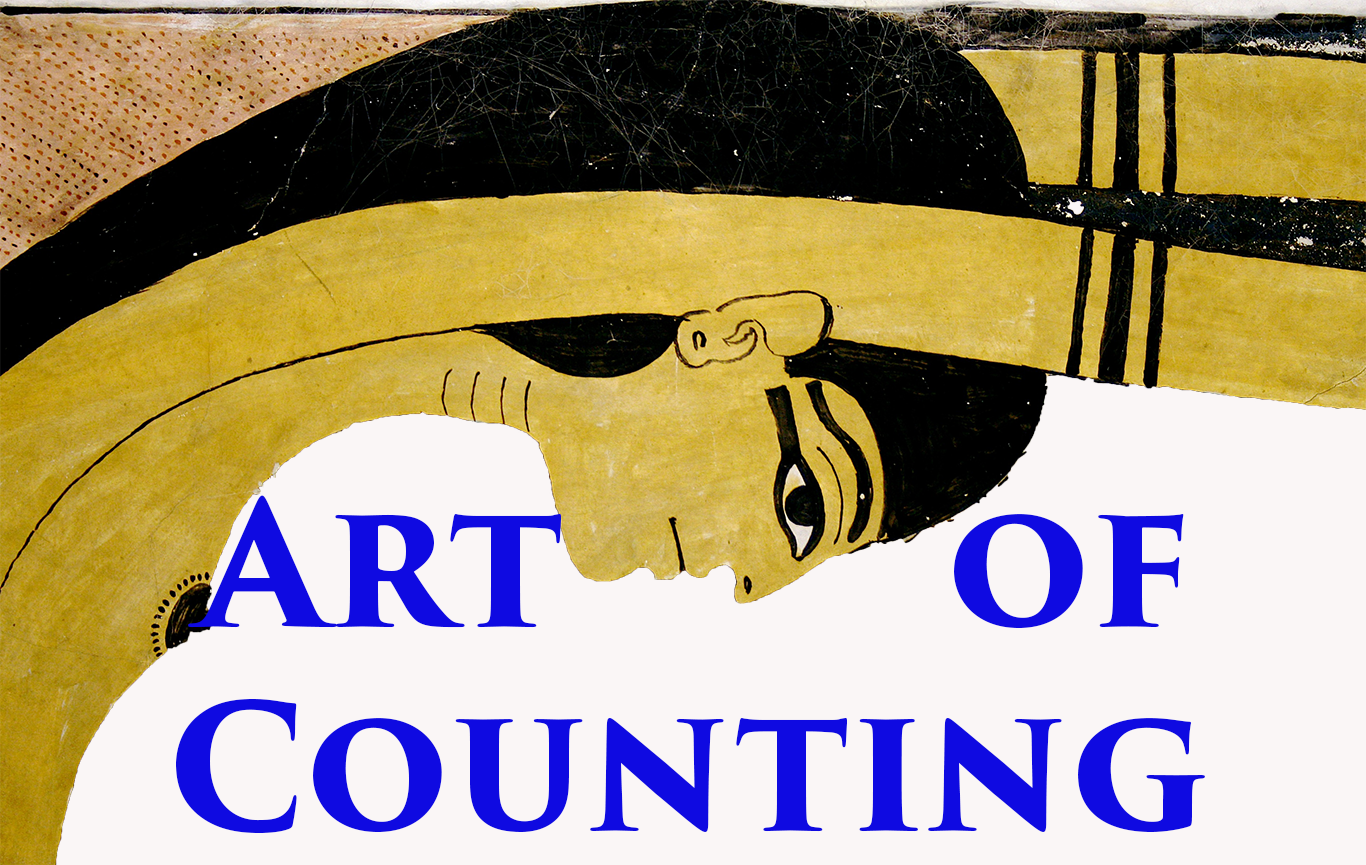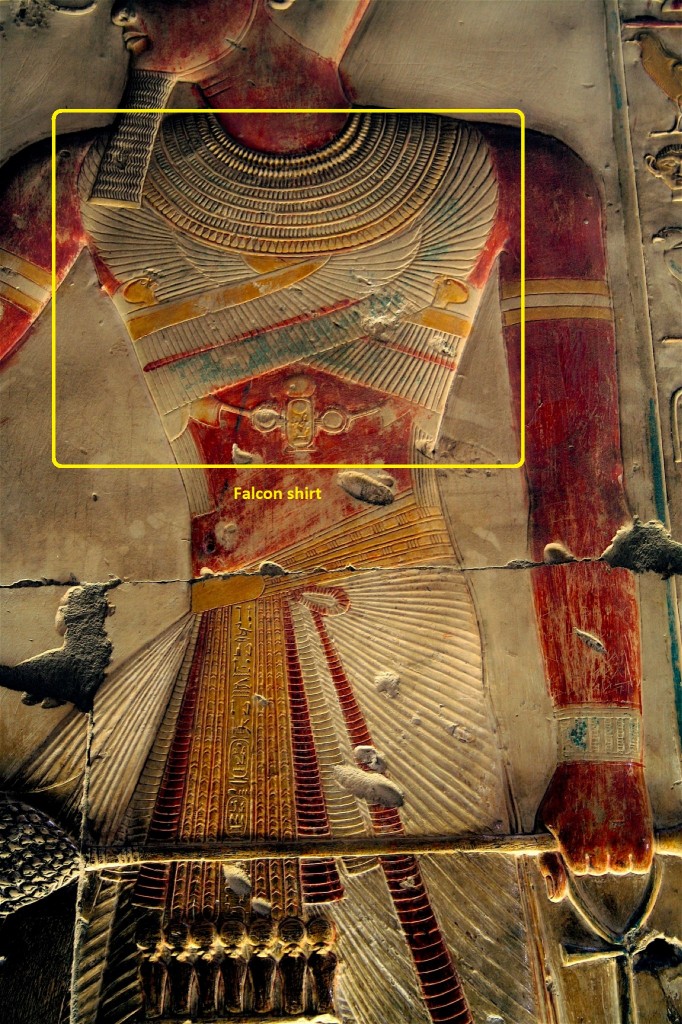Temple of Seti I at Abydos
NOTE: Falcon shirts, and falcon garments in general, became particularly prominent in the Eighteenth Dynasty. Several relief examples are preserved at Hatshepsut’s temple at Deir el Bahri, on monuments of Amenhotep III, and the temple of Seti I at Abydos, but most of the time they are rendered only in paint. When the king wears these shirts, he is being symbolically embraced and shielded from harm by the gods Horus and/or Montu. It is highly likely that they were far more common than currently recognized. For instance, smiting scenes on the columns in front of the Window of Appearance at the memorial temple of Ramses III at Medinet Habu (which appear to show a bare-chested pharaoh) preserve numerous traces of these shirts. For more, see A. Calvert, “Quantifying Regalia: A Contextual Study into the Variations and Significance of Egyptian Royal Costume Using Relational Databases and Advanced Statistical Analyses,” in P. Brand (ed.) Causing His Name to Live: Studies in Egyptian Epigraphy and History in Memory of William J. Murnane, esp. p. 51-54. Link provides full pdf download of all articles in this volume.



